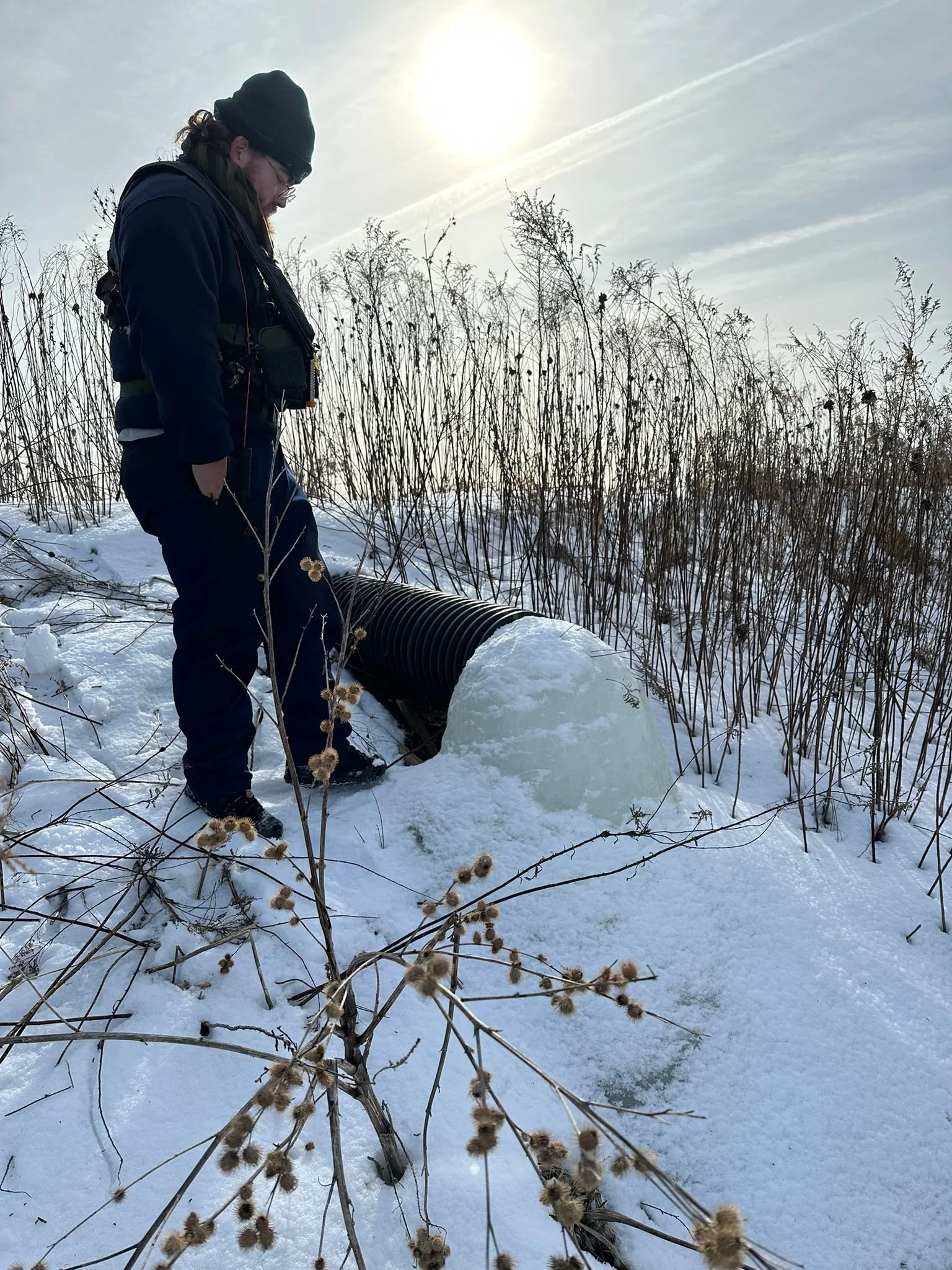Cold Realities: The Challenges and Necessity of Winter Science
An Article by Shayna Meinzinger
Fieldwork is always an adventure, but winter's arrival brings a whole new set of challenges. Frozen landscapes, subzero temperatures, and unpredictable conditions transform routine sampling into a test of perseverance and ingenuity.
Why is winter fieldwork important?
Winter conditions can deter even the most experienced researchers, leading some to assume that nothing significant happens in wetlands during the cold months. For example, greenhouse gas studies often skip winter entirely, assuming methane emissions are negligible. But we braved the elements, pushed through the ice, and found that these assumptions are not necessarily true. Wetlands remain active even in winter, and our work helps fill critical knowledge gaps in seasonal methane dynamics.
Overcoming the challenges of winter research
One of the first obstacles in winter wetland research is simply getting to the site. In summer, accessing an isolated wetland might be as easy as driving a truck to its edge. In winter, however, snow-covered access roads can turn even a four-wheel-drive truck into a stranded hunk of metal. Wagons become useless in deep snow, forcing us to swap them for sleds.
Winter field team preparing and transporting sampling equipment to the site.
Once we arrive, the next challenge is reaching the water. When the surface freezes over, sampling becomes far more physically demanding. Instead of simply reaching into open water, we have to auger through thick ice just to collect a sample. It’s an extra step that adds time and effort.
Shayna Meinzinger augering the ice (left). Methane bubble frozen within the ice (right).
Winter fieldwork also demands extra personal protective equipment (PPE). Beyond the usual gloves and boots, we layer up with ice picks, extra insulation, hand and foot warmers, and an extensive knowledge of ice safety. Falling through thin ice is a real danger, making proper training essential.
Winter field team conducting various sampling techniques.
Staying warm is just as critical—especially when working in extreme cold.
The freezing temperatures don’t just challenge us; they are brutal on our equipment, too. Electronic sensors and sampling devices don’t appreciate subzero temperatures—YSI probes freeze, valves get stuck, and stopcocks refuse to turn. More often than not, we find ourselves huddled around instruments, warming them with body heat or coming up with quick fixes to keep our experiments running. Problem-solving on the fly becomes second nature.
Harsh weather conditions left the outlet sampling location completely frozen at one restored wetland.
The relentless cold takes a toll both physically and mentally. Fingers go numb, toes burn, and the sheer exhaustion of trudging through deep snow in heavy gear sets in quickly. Keeping morale high is crucial, and sometimes, the best solution is a simple one—plenty of Tim Hortons coffee and hot chocolate to keep the team going strong.
Winter field team keeping morale high (Shayna Meinzinger, Jordan Li, Sara Abate, Cooper Pickering, Isabella Sciorilli).
Despite the challenges, winter fieldwork is essential for understanding how ecosystems function year-round. By pushing through the cold, we uncover important seasonal dynamics that would otherwise go unnoticed, proving that science doesn’t stop when the temperature drops.











